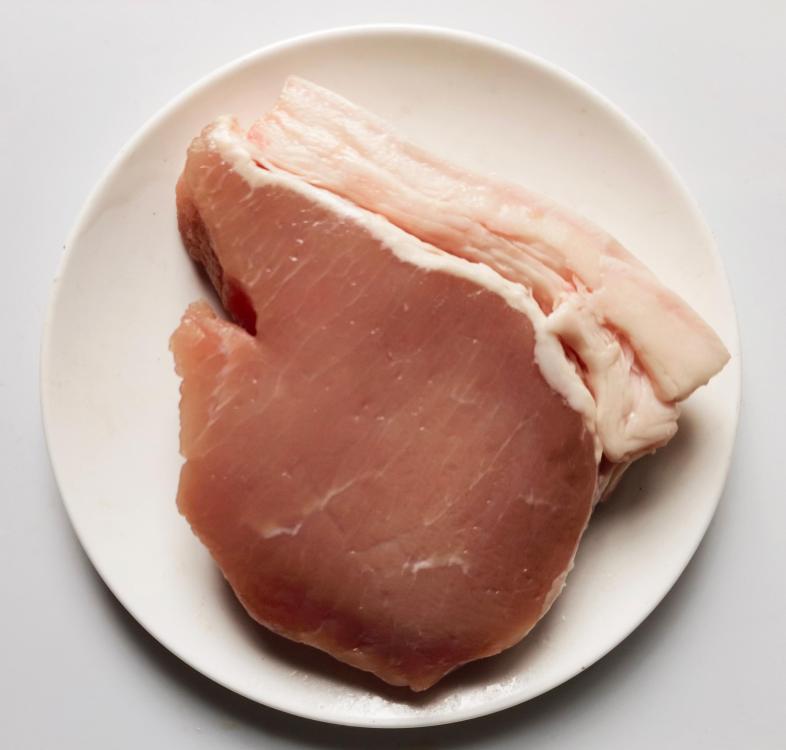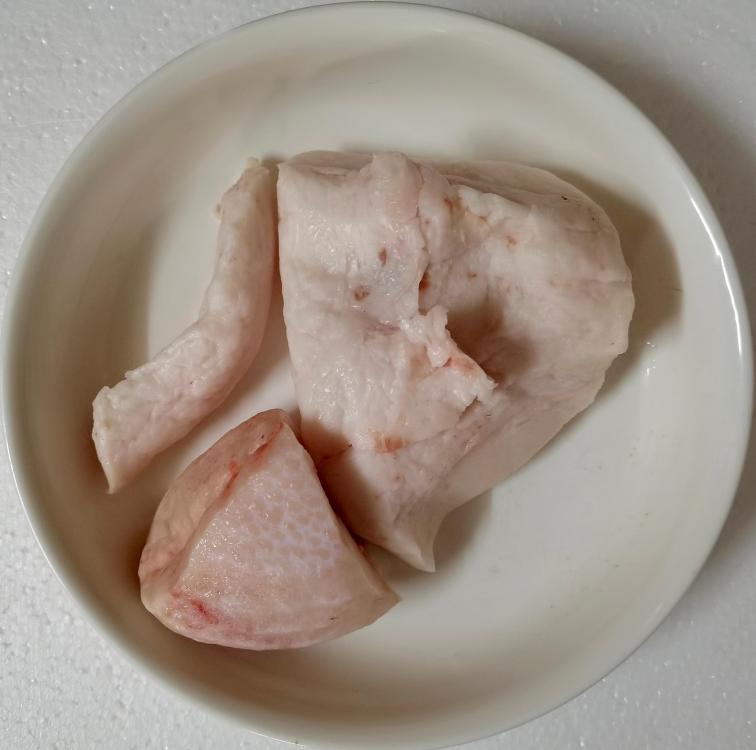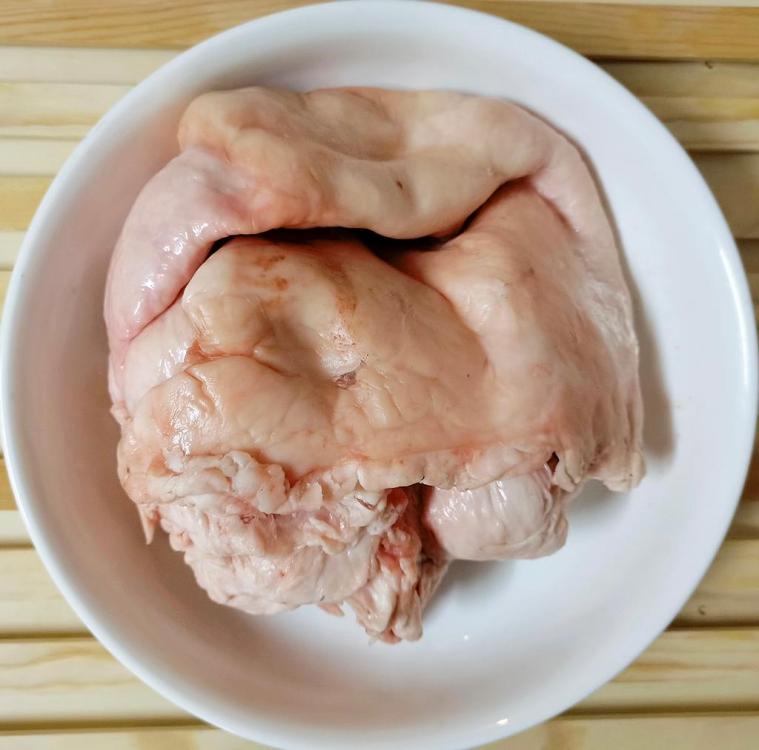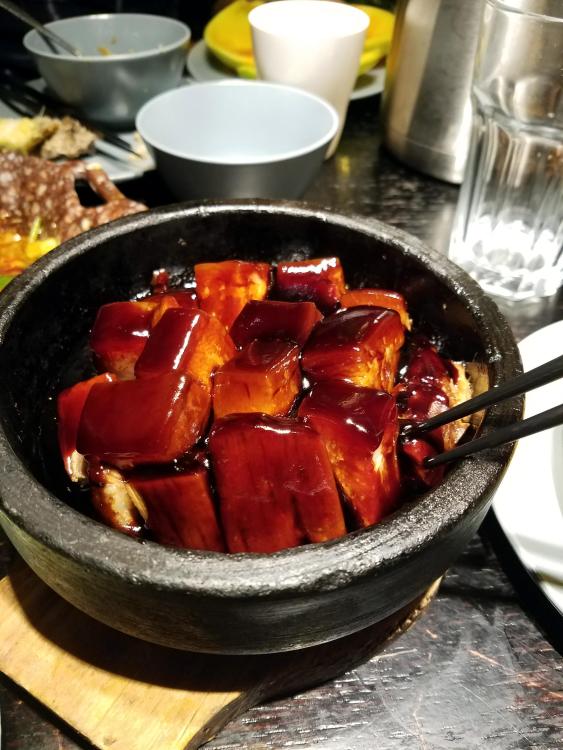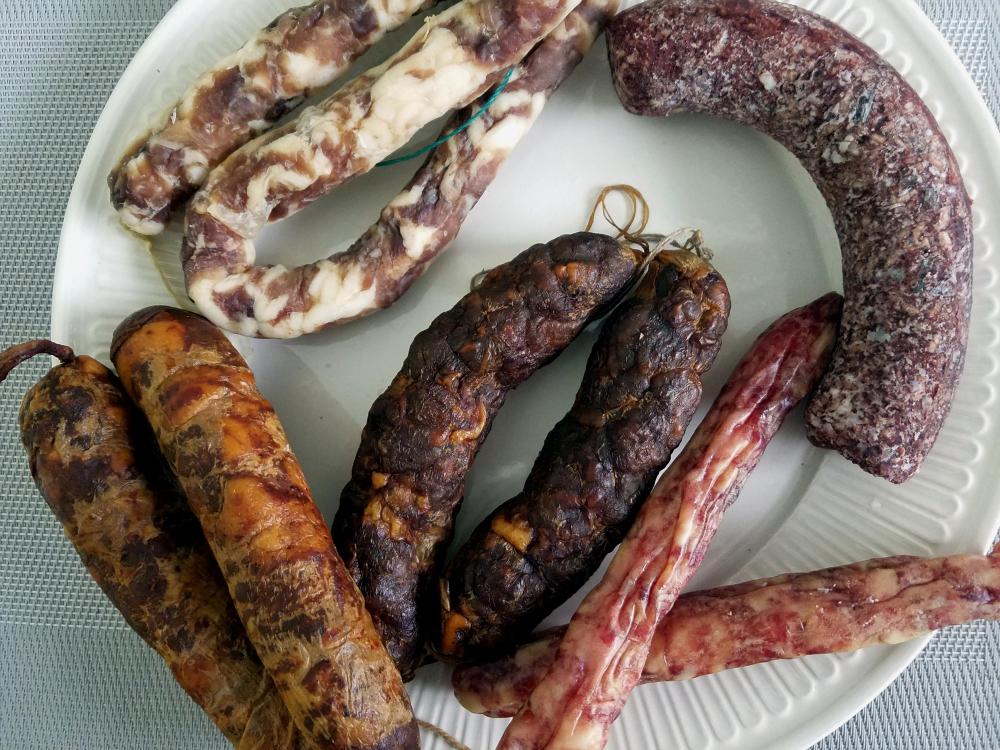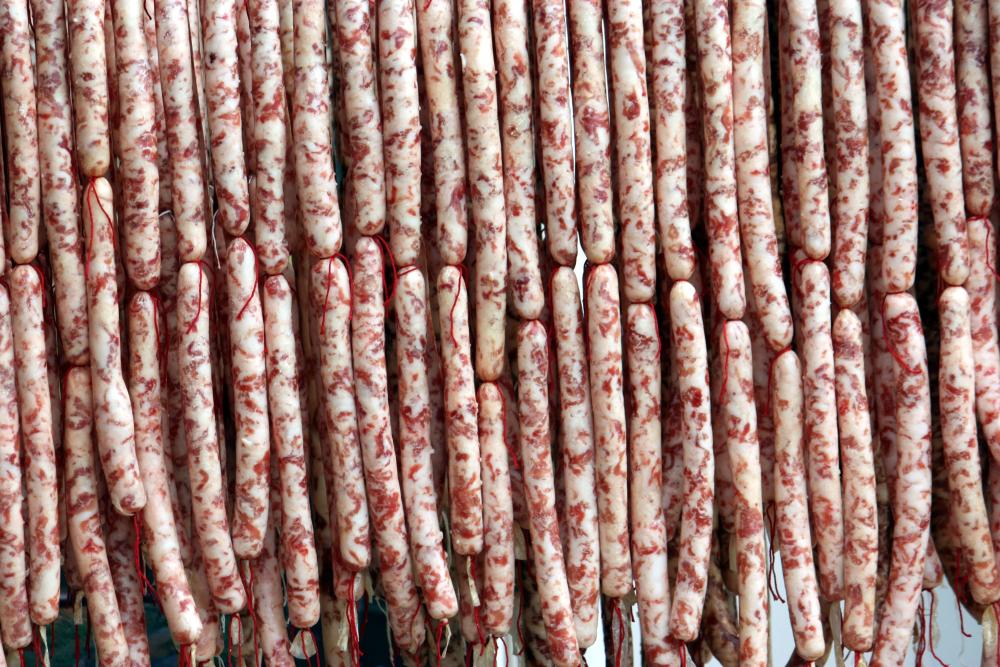I’ve mentioned before my enjoying watching old women fighting over bits of meat in the supermarkets in China. I’ve turned it into a spectator sport. The amusing thing is that they are usually after bits that most of us would reject out of hand. For example this would be low on their desirability scale.
Instead they would do injurious battle to get their grubby little manual appendages on this.
The first doesn’t have enough fat to satisfy them, the second is nearly all fat.
OK. I exaggerate but only a little. They do battle for the fattier cuts in the knowledge that it comes with its own built-in cooking medium. In the case of my first picture, they will separate the fat from the flesh, chop the fat and render it down to cook the rest of dinner. Vegetables are nearly always stir-fried in pork fat rendered at home each meal.
However, this is a low quality fat. To obtain the best results you need to obtain the best fat from which to make your lard and it is generally accepted that this is the ‘flare’ or ‘leaf fat’ which is mainly found surrounding the internal organs such as the kidneys. This is what, in other animals such as sheep and cattle is referred to as suet. Back fat is also a good source, followed by the ever-common pork belly fat.
Fortunately, good fat is easy to source. Most supermarkets sell it as pictured above. And it’s very cheap, if not as cheap as the lower quality stuff still attached to the flesh.
There are websites with information on how to render the lard, including this one, however the Chinese cook will do it in a wok on relatively low heat. I tend to add a splash of water to start the process without scorching - the water soon evaporates once the fat starts to melt.
Lard was, not so long ago, a common choice fat in Europe and the Americas for all sorts of cooking from frying to baking, but became demonised recently as part of the anti-fat movement and competition / propaganda from the liquid oil industry. China has largely avoided that trap, except perhaps in the larger cities such as Shanghai, Shenzhen and Beijing.
In fact, lard has many health advantages over the common oils used worldwide. Also, of course, it is (as those Chinese grannies recognise) an important element of nose-to-tail. Why buy expensive, highly refined air-mile heavy oils when you can use more healthy, local fat that would otherwise be wasted?
The fat is rendered and any remaining solids are eaten as snacks à la "cracklings," or "pork rinds" depending on your local terminology. No waste.
Of course the Chinese are much more fat tolerant than modern Europeans or Americans generally tend to be. A favourite dish (which I find inedible) is Dongpo pork from Hangzhou in eastern China which is extra fatty pork belly (with the skin) slow cooked for hours in rice wine and soy sauce until very soft. Although it isn’t greasy in the mouth, it is basically 95% fat. It’s the texture I don’t like. I like my fat crisp.
Dongpo Pork
Also, some, maybe most, Chinese sausages have huge amounts of fat in them; certainly more than would be acceptable in most western kitchens.
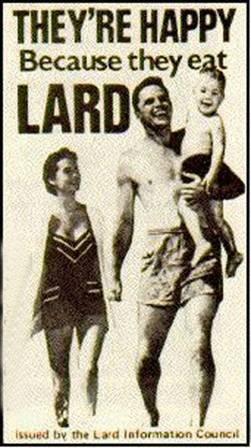
PD


